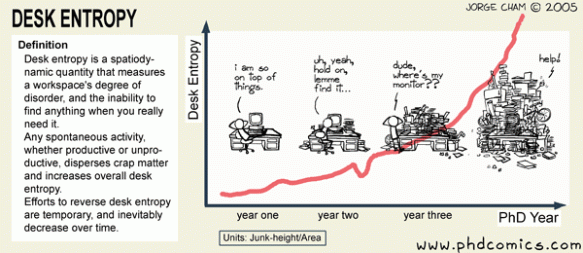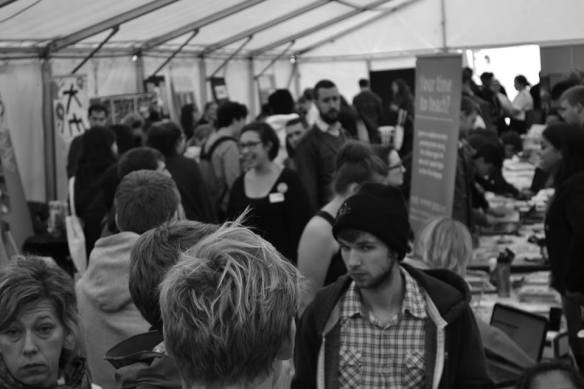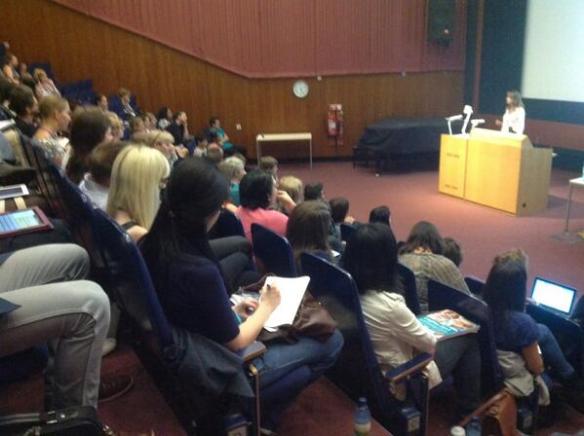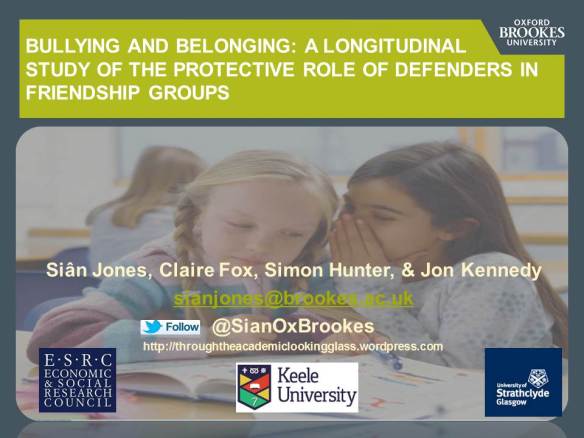For those unfamiliar with the term, desk entropy, as defined by Jorge Cham, is the a measure of the degree of disorder of a work space, and that frustrating inability not to be able to find things when you need them.
My desk started tidy at the beginning of the semester. Honest, Mum. It now looks like this:
 I was reflecting on this earlier this week, after someone tweeted about this paper:
I was reflecting on this earlier this week, after someone tweeted about this paper:
Vohs, K., Redden, J., & Rahinel, R. (2013) Physical order produces healthy choices, generosity, and conventionality, whereas disorder produces creativity. Psychological Science, 24, (9), 1860-1870.
What does my desk say about me? These researchers did three studies to look at the effects of tidiness. Study 1 showed that participants in a tidy room chose healthier snacks and donated more money to charity.Study 2 showed that participants in an untidy room were more creative. Study 3 showed that those in a tidy room preferred a “classic” option, but those in an untidy room preferred a “new” option.
The news here is that untidiness isn’t all bad. In these studies, although tidiness was associated with healthier choices, being in an untidy room enhanced creative thinking. I’d say that my desk is decidedly cluttered at the moment. There’s a hairbrush and scissors out of place, and wonder-duck is just sitting around, having recently taken part in an MSc lecture. My papers couldn’t be classed as “filed” in that in-tray. So – should it stay like that to enhance my creativity? That would be good for my research…
Participants in Study 2 of this paper were introduced to a messy or tidy table, and asked to come up with up to ten alternative uses for ping-pong balls. The creativity of the ideas was rated by independent coders with a good kappa score (i.e., good inter-rater reliability), on a scale from 0-3. By this method, average and overall creativity were higher when the room was untidy, and the number of ‘3’ rated ideas was also higher. Yet the number of ideas generated across conditions was similar: it was the creativity of the ideas that varied.
And that’s what I want. I have limited time and resources, so a few highly creative research ideas are more valuable to me than hundreds of mundane ones. Research evidence shows that other factors, not taken account of here, are important, however. Foss et al. (2013) found that gender and social support for ideas generated creativity, with women’s ideas less likely to be taken on board than men’s. Lukersmith et al. (2013) found that it was time for thinking, and incentives that were good indicators of creativity. These papers had a wider variety of measures of creativity, which were related to real-life work problems. The measures also had greater scale variability, than 0-3 as used by Vohs et al. (2013). But they didn’t measure untidiness of the work environment. This could have trumped the factors that were measured….
So what about untidiness? Other research on untidiness shows that it is problematic for normally contentious people, but not for un-conscientious individuals (Mateo et al., 2013) in terms of task accuracy. So personality types have a bearing on the effects of untidiness. Ramos and Torgler (2012) found that academics and postgrads were more likely to litter in a messy environment than a tidy one. So untidiness affects social-norm violation, in the form of littering. It is possible then, that effects of tidiness generalize beyond the students tested by Vohs et al. But what of norms? What are the processes that link untidiness to creativity? I’d want to know more about those before I resorted to not tidying up.
Research suggests that untidy environments, in the form of documents everywhere, might help academic research via accessibility of information. In a paper on open-office spaces, Lansdale et al. (2011) report that their research shows that the cluttered environment of a research office can aid memory retrieval, and that the accessibility of possibly-useful-at-some-point information in a messy space (over a ‘hot desk’ that has to be cleared at the end of the day) may help to generate new research ideas. So untidiness might just be helpful in my particular creative domain….
To bring this together then,I probably should tidy up. While there was a strong effect found on creativity in a messy environment by Vohs et al., other factors need to be controlled for, before I can conclude that untidiness is a good thing for my research (especially if I count myself as conscientious, for example). Further to this, I would need to measure creativity in more depth (and in a relevant way to the creativity I need) and would want to look more closely at what should be untidy (and how untidy) to prompt creativity (my desktop on my PC has a beautiful filing structure). Is untidiness just about the physical environment….
I did love the end to this paper. As Einstein noted ‘If a cluttered desk, is a sign of a cluttered mind, of what then, is an empty desk, a sign?’…..there is hope for me and my desk-space yet…





